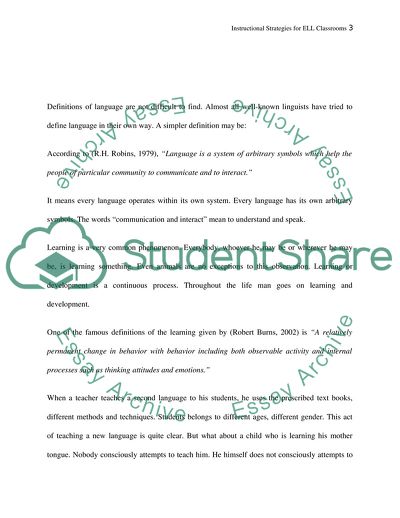Cite this document
(Instructional Strategies for English Language Learner Classrooms Term Paper Example | Topics and Well Written Essays - 1500 words - 2, n.d.)
Instructional Strategies for English Language Learner Classrooms Term Paper Example | Topics and Well Written Essays - 1500 words - 2. https://studentshare.org/education/1713127-instructional-strategies-for-ell-classrooms
Instructional Strategies for English Language Learner Classrooms Term Paper Example | Topics and Well Written Essays - 1500 words - 2. https://studentshare.org/education/1713127-instructional-strategies-for-ell-classrooms
(Instructional Strategies for English Language Learner Classrooms Term Paper Example | Topics and Well Written Essays - 1500 Words - 2)
Instructional Strategies for English Language Learner Classrooms Term Paper Example | Topics and Well Written Essays - 1500 Words - 2. https://studentshare.org/education/1713127-instructional-strategies-for-ell-classrooms.
Instructional Strategies for English Language Learner Classrooms Term Paper Example | Topics and Well Written Essays - 1500 Words - 2. https://studentshare.org/education/1713127-instructional-strategies-for-ell-classrooms.
“Instructional Strategies for English Language Learner Classrooms Term Paper Example | Topics and Well Written Essays - 1500 Words - 2”. https://studentshare.org/education/1713127-instructional-strategies-for-ell-classrooms.


